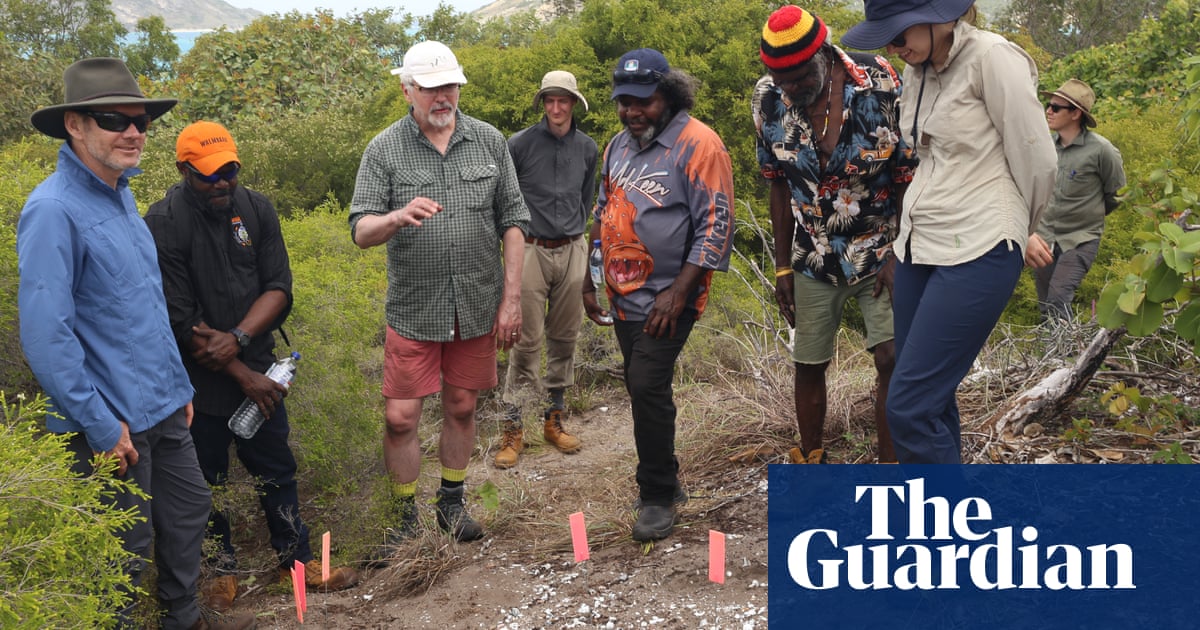Great Barrier Reef discovery overturns belief Aboriginal Australians did not make pottery, archaeologists say | Indigenous Australians


Groundbreaking archaeological research may have upended the longstanding belief that Aboriginal Australians did not make pottery.
A paper published in the Quaternary Science Reviews on Wednesday details the finding of 82 pottery pieces from a single dig site on a Great Barrier Reef island, dates them at between 3,000 and 2,000 years old and determines that the pots were most likely made by Aboriginal people using locally sourced clay and temper.
The pieces are the oldest securely dated pottery discovered in Australia and weave Indigenous Australians into an ocean-going network of people in Papua New Guinea, the Torres Strait and Pacific Islands who formed a “community of cultures across the Coral Sea”, the paper finds. Fragments of pottery have also been found on the Torres Strait.
The archaeologists say the finds open “a new chapter in Australian, Melanesian and Pacific archaeology”.
The Walmbaar Aboriginal Corporation chair, Kenneth McLean, is a Dingaal clan member and traditional owner of the group of islands on which the pottery was unearthed.
“For our elders Jiigurru was always a sacred place,” McLean said. “It was always a place of trading and ceremony.”
The James Cook University distinguished professor Sean Ulm, who co-led the dig alongside Monash University’s Prof Ian McNiven and with the Dingaal and Ngurrumungu communities, says the finds not only overturn notions about Aboriginal people and pottery but a number of “very common tropes” about Indigenous Australians.
One is that they were all isolated from the rest of the world. Another related to the simplicity of Aboriginal watercraft.
The chain of islands of Jiigurru – of which the 10 sq km Lizard Island is the largest – surround a lagoon about 33km off Cape Flattery.
The 2.4-metre deep dig unearthed evidence of continuous occupation going back more than 6,000 years on the islands, cut off from the mainland by sea level rise at least 10,000 years ago.
McLean believes that his ancestors would have used the clay pots to carry resources such as water and shellfish on the long canoe voyages to the islands.
“Holding the pieces of pottery that were locally made, on country, that was feeling my ancestors’ presence,” he said. “It was an emotional moment, holding something that was ancient.”
Much remains to be learned about how the pots were made and appeared. The average size of the sherds is less than 2cm – too small and fragmented to reveal much of their original form and function.
So momentous a story told by such tiny pieces of worked earth explains why the research took years to reach publication, Ulm says.
The dig began in mid 2017 and ended 14 months later. But its findings would challenge a view widely held among academics since fragments of pottery were first spotted on Jiigurru by a holidaying archeologist from New Zealand while he snorkelled the shallow lagoon in 2006.
Attempts to date those pottery pieces were inconclusive, though they were interpreted by many as direct evidence of the presence of Lapita people in Australia.
From the islands of eastern Papua New Guinea and over the span of a few centuries, the Lapita and their descendants settled vast swathes of the remote Oceania, taking pigs, dogs and chickens, taro and breadfruit, and their distinctive pottery to the Solomon Islands and eastwards across the Pacific into Vanuatu, New Caledonia, Fiji, Tonga and Samoa.
after newsletter promotion
Ulm’s paper describes it as “one of humanity’s great maritime settlement accomplishments”.
But when Ulm and his colleagues went looking for more pottery pieces using the kind of methodical dig that could shed light on who made the Jiigurru pottery and when, they found none of the telltale signs – chicken bones or traces of banana – that would suggest Lapita occupation. Instead the shellfish and fish bones of the midden site spoke of continuous Indigenous occupation. And none of the ceramic sherds bore the hallmark designs of Lapita potters.
The find begs the question of why pottery pieces weren’t found on the site after about 2,000 years ago, though seasonal occupation continued. That, Ulm says, is a question which cannot be answered from one dig site and will require more research to unravel.
McLean, too, hopes the research will encourage further collaboration between Indigenous communities and archeologists that will “find more of the ancient artefacts that could rewrite Australia’s ancient history”.
University of Southern Queensland professor, Bryce Barker, who was not involved in the study, says it “certainly is very significant” and an “exemplary piece of research”.
“The science in that paper is exemplary – you can’t fault the science,” he said. “I don’t think there is any question that there is pottery there at 3,000.”
But the claim that Aboriginal people made the pottery, he said, was “a little bit contentious”.
“Perhaps the more parsimonious explanation for why that pottery is on Lizard Island is that it is part of that trade and interaction with those people from the north, rather than it being something that Aboriginal people manufactured,” he said.
The researchers involved argue that the ancient pottery of the Great Barrier Reef “points to the likelihood” of more remains, perhaps including Lapita, scattered about “the vast and archaeologically unknown north-east Queensland coastline”.
“To me, that’s what’s exciting about the find, that it’s a little glimpse into the extraordinary knowledge that we are yet to unfold about the deep history of this country,” Ulm said.
“If one excavation of one metre by one metre can tell us all these ‘new things’, what does the rest of the coastline have to teach us?”
Source link




